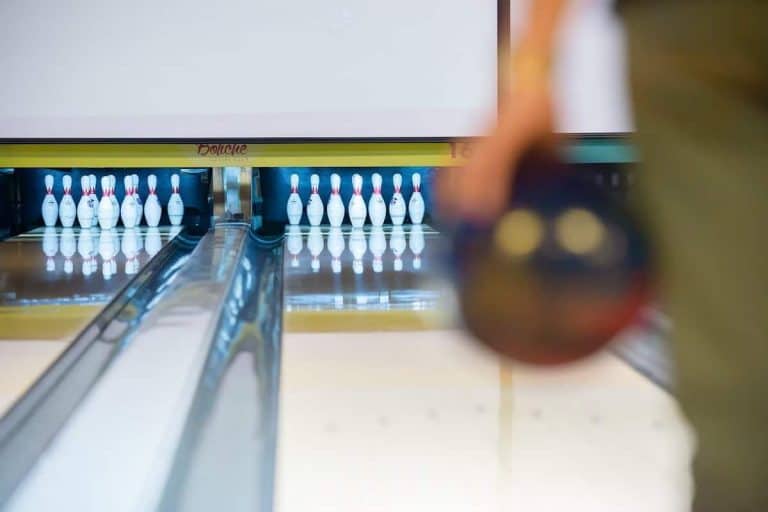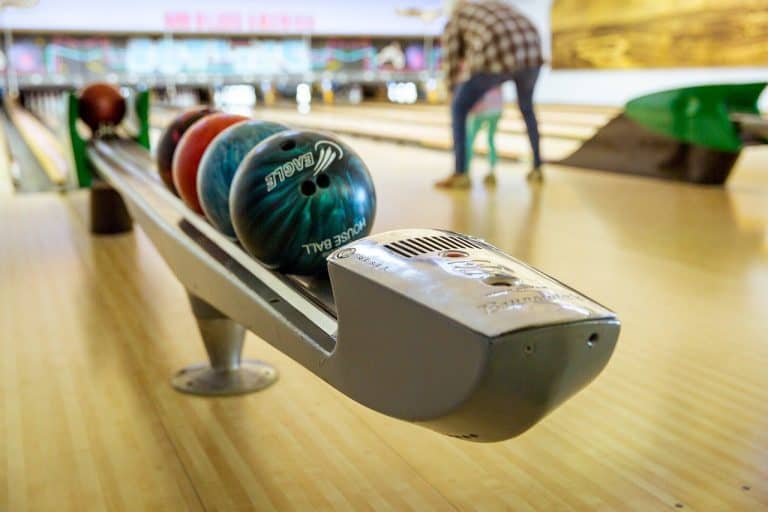Do Pearl Bowling Balls Absorb Oil?
Bowling lanes must be slippery. The wood surface is moistened with oil to protect it from friction caused by bowling balls. Nowadays most alleys are made of synthetic materials. Bowling alleys use oil to make the game more challenging. But this oil ends up being absorbed by your ball. Making it difficult to have it cleaned. You might be wondering if the same thing happens with pearl bowling balls.
Pearl balls absorb oil much as any other coverstock. In fact, pearl bowls are known to absorb more oil than other materials. Plastic, urethane, solid, and hybrid materials absorb oil at different rates.
Here we’ll look into more specific information about pearl coverstock. We’ll discuss other coverstock materials. Best cleaning methods and will also see a section FAQ’s on bowling balls.
What Are Pearl Bowling Balls And What’s The Benefit Of Using Them?
The outer shell of the ball is the coverstock. This is the part of the ball that you touch and it is the part of the ball that makes contact with the lane. Making it the most influential element of the ball in relation to the hook.
When people talk about pearl bowling balls they refer to a bowling ball with a pearl coverstock. Also known as pearl reactive, this is a coverstock developed in the 1990s.
They are made of a combination of mica powder. Mica is an almost perfect crystal because its bonds are very strong. These balls are able to react quickly to dry portions of the lane. Their pores are roughened which helps them to store more energy. Therefore, this option works better when the lanes dry up.
Pearl is one of the three reactive coverstocks, the other two are solid and hybrid. Among the three reactive coverstocks, this one is the most durable. Experienced bowlers switch to pearl coverstocks toward the end of a tournament, when their shots begin to break down.This is when you benefit from migrating to a Pearl coverstock.
A pearl coverstock can help if you want to increase the carrying power of your house shot and in any case, you will get more length and a sharper response. Pearl Coverstock is recommended for bowlers whose speeds are slow and who struggle with natural length.
How Are Pearl Bowling Balls Different From Solid Balls?
The solid reactive coverstock is designed to have higher friction than pearl coverstocks. These balls tend to hook sooner and lose more energy as they run down the lane.
The main difference between pearl and solid balls is the performance. Solid Coverstocks will react first when compared to pearl. On heavy to fresh volume patterns, solid coverstock is most often used since they have the capacity to run through the oil.
At the same time since they have been designed for high-oiled lanes one of the drawbacks is that they have high rates of oil absorption. As such they require more maintenance than your Solid Coverstocks are a good choice for bowlers at faster speeds who help with reaction.
Do All Bowling Balls Absorb Oil?
Plastic Balls
These balls are usually made out of polyester. Polyester molecules will not bond with oil, but they will be dragged down the lane. This event is called “carry-down”. Plastic balls are usually recommended for beginners, shooting spares, and throwing straight.
Urethane Balls
Urethane is very similar to plastic. These balls absorb small amounts of oil, so instead of picking up oil they leave oil rings down the lane.
Reactive Hybrid Balls
Hybrid is one of the three reactive coverstocks. These combine elements from the pearl and solid coverstock. Hybrids will absorb more oil than pearls and less oil than solids. They react to friction similarly to solid, but they preserve like a pearl coverstock.
What Is The Best Bowling Ball For Oily Lanes?
Most people agree reactive hybrid balls are the best options for heavy oil lanes. People claim some of its benefits include that they are high performance. They’re ideal for intermediate to advanced bowlers too. This is because they are powerful in the mid lane, and extremely aggressive.
Other people claim solid coverstock is better because they offer great hook potential. These have more aggression at the far end and impressive control. This material is long-lasting as well.
Professional bowlers suggest pearlized balls are the go-to in oily lanes. Due to their strong hook and backend.
Which one is the best, that’s a question without a definite answer. It will all depend on the user’s preferences and expertise.
How To Clean Off Your Bowling Ball At Home
There are several methods to clean your bowling ball:
Immersion Method
For this one you will need:
- A bucket
- Hot water
- Duck tape
- A microfiber towel
Instructions
Fill a quart of a bucket with hot water. Make sure the water is not piping hot, it should be warm enough to remove the oil. Note that the bucket you use will be very greasy at the end of this process.
Use the duck tape to cover the holes before submerging the ball into the water. Some people consider this step is not necessary, but it is advised to do it. Especially if you don’t want your ball to saturate with water.
Place the ball into the water, it should be completely immersed. Feel free to add more water if necessary.
Leave the ball to rest in the hot water for about half an hour.
Once the oil has come out of the ball, remove the ball from the water.
Carefully remove the ball from the water. Make sure you remove the oil from the ball using a microfiber towel to complete the process.
Place the ball in a place to dry.
Pro Shop Cleaning
Pro shops have specialized machines that deep clean your balls. They submerge the ball into heated tanks of water to open the pores of the ball and remove profound oil.
Regular Cleaning
Cleaning your ball every time you bowl is highly recommended to avoid deep cleaning. Fresh oil is easy to wipe. It is recommended to keep a microfiber towel with your bowling gear to use after every shot. You must change the towel after it has soaked up enough oil so it doesn’t transfer it back to the ball.
It takes time for the oil to build up. If you clean off the oil regularly, there’s less chance it becomes hard to remove.
Historical Facts About Bowling Balls
- The first bowling balls were made out of wood.
- In 1905 rubber balls were introduced.
- Plastic balls were introduced in 1959.
- Rubber balls became obsolete by 1980 following the release of urethane coverstock.
- In the early 1990s reactive resin balls were introduced.
- Particle-enhanced coverstock was released by the end of the 1990s.
- Coverstock is the most important aspect when it comes to the ball’s traction.
- Pearl coverstock are the ones with the most skid distance among reactive coverstocks
Frequently Asked Questions
Is Rubbing Alcohol Bad For Bowling Balls?
Yes, it is, rubbing alcohol will damage the coverstock, making it dry and prone to cracking. You shouldn’t use it to clean your ball.
Can I Use Glass Cleaner To Clean My Bowling Ball?
You can use a glass cleaner and a microfiber towel to clean your bowling ball. This will help you to lightly remove small amounts of oil. If you need to get rid of oil, take your bowling ball to a pro shop or do the immersion method at home.
What Can You Do With Old Bowling Balls?
Here are some ideas on what to do with old bowling balls:
- Use them as decoration
- Take them to a local recycling center
- Sell them
- Donate them
Can You Use A Magic Eraser On A Bowling Ball?
Magic erasers are considered to be fine sandpaper. Some people claim it is safe to use it in your bowling ball. We recommend you to be careful about this method.
What Is The Most Hooking Bowling Ball Coverstock?
When it comes to the hook, Urethane coverstock is the go-to option. Its high friction rate on the lane surface, urethane coverstock deflects less, therefore, has better pin action.
How Often Should I Replace My Bowling Ball?
Your ball could last years as long as you take very good care of your bowling ball. Clean it when needed, and store it under the appropriate conditions to extend its life span.
Final words
Pearlized balls are a great option for dry surfaces. They can be very helpful for advanced bowlers.
When heading to bowling tournaments, make sure your arsenal is well covered. As you have learned, it can be helpful to have a nice mixture of each coverstock.
Instead of looking for the coverstock with less oil absorption, make sure you are cleaning your balls properly. You can do it after every game or take the ball to a pro-cleaner every once in a while.
Bowling is all about trial and error. There is no right or wrong when it comes to this game. Be open to changes and remember practice makes perfect.







